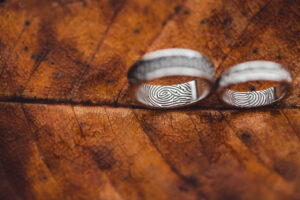7 Common Shoulder Injuries and Why You Need to See a Doctor

Shoulder injuries can be excruciating and debilitating. There are different muscles and tendons in the shoulder, and they all work together to enable one to move their arm in every direction. It’s no wonder that shoulder injuries are so common. Shoulder injuries can be caused by falls, car accidents, sports injuries, or overuse.
1. Shoulder Dislocation
A shoulder dislocation happens when the ball portion of the joint (the humerus) pops out of its socket (the glenoid). This can result from a fall, direct hit, or gradually over time if the shoulder is not adequately taken care of. The most common dislocation is anterior, meaning the ball has popped out in front of the socket. This puts pressure on the ligaments and tendons around the shoulder joint and can be extremely painful. If you believe you may have dislocated your shoulder, it is essential to seek medical attention immediately, as further damage may occur if it is not treated correctly.
2. Shoulder Bursitis
Shoulder bursitis is the inflammation of a small sac of fluid (a bursa) that acts as a cushion between tendons and bones. The bursa in the shoulder is located between the rotator cuff tendon and the shoulder blade. Treatment for shoulder bursitis includes rest, ice, and physical therapy. However, in some cases, shoulder bursitis may require more aggressive treatment, such as physical therapy or steroid injections. If you think you may have shoulder bursitis, you must see a doctor so the condition can be appropriately diagnosed and treated. If left untreated, shoulder bursitis can lead to chronic pain and disability.
3. Shoulder Arthritis
If you have shoulder arthritis, you may be feeling pain, stiffness, and decreased range of motion in your shoulder. The most common shoulder arthritis is osteoarthritis which occurs when the cartilage that cushions the bones starts to break down. No cure for shoulder arthritis exists, but treatments can help relieve your symptoms and improve your quality of life. Physical therapy is often recommended to help maintain range of motion and strength. In some cases, surgery may be necessary to repair damage to the joint.
4. Shoulder Separation
A shoulder separation arises when the ligaments that hold the shoulder joint in place are stretched or torn. This can result from a fall, a direct blow to the shoulder, or other traumatic injuries. The most common symptom of shoulder separation is pain at the point where the injury occurred. Treatment for shoulder separation will vary depending on the grade of the damage. Physical therapy may also be recommended to improve range of motion and strength. In severe cases, surgery may be opted to repair wholly torn ligaments.
5. Frozen Shoulder
Frozen shoulder is a condition that typically occurs when the connective tissues in the shoulder joint become inflamed and stiff. This can happen for various reasons, including repetitive motions, injuries, and medical conditions like diabetes. The three stages of frozen shoulder include freezing (painful stage), frozen (stiffness stage), and thawing (recovery stage).
Treatment for frozen shoulder may include physical therapy, anti-inflammatory medication, or steroid injections. Surgery is rarely needed. Most people recover from the frozen shoulder with treatment within one to three years. Physical therapy exercises can help improve the range of motion and reduce pain.
6. Rotator Cuff Tear
A rotator cuff refers to muscles and tendons that attach the shoulder blade to the upper arm and stabilizes the shoulder joint. Rotator cuff tears are grouped as either partial or full-thickness tears. A partial-thickness tear means the muscle or tendon is torn but not entirely through. A full-thickness tear means that the muscle or tendon is completely torn through. Rotator cuff tears do not heal independently because the blood supply to the rotator cuff is minimal. When the rotator cuff Tears, it often pinches between the shoulder blade and upper arm bone, causing severe pain. The only way to treat rotator cuff tears is through surgery.
7. Shoulder Labrum Tear and Bankart Injury
The shoulder labrum is a cartilage rim that surrounds the shoulder joint socket. The labrum helps in keeping the ball of the joint in place. A tear in the labrum can occur due to trauma or overuse. This injury is often seen in athletes participating in overhead activities, such as baseball or tennis. A shoulder dislocation can also cause a tear in the labrum. This is known as a Bankart injury. Treatment for a torn labrum typically includes rest, ice, and physical therapy. In some cases, surgery may be appropriate to repair the damage.
In conclusion, shoulder injuries can be caused by various factors, ranging from poor posture to repetitive motions. If you think you may have a shoulder injury, it is essential to see a doctor right away. Early diagnosis and treatment can help block more damage and speed up healing. However, if left untreated, shoulder injuries can lead to chronic pain and decreased range of motion.







